Compact and functional, 65% keyboards are popular nowadays, mainly for gaming and typing.
They are the best option if you want a keyboard with better functions than the 60% keyboard but smaller than a full-sized keyboard.
A 65% keyboard typically contains 67-68 keys. However, this number can vary slightly depending on the manufacturer.
Moreover, it can also have as many as 71 and as few as 66 keys.
Further, 65% keyboards lack Numpad, F- keys, Dedicated media keys, and print screen keys.
I have always used full-sized keyboards and considered anything with fewer keys less functional.
Since I don’t use the Numpad often and only need the keyboard for basic typing, I choose a 65% keyboard. It has turned out to be the best option.
What Is A 65% Keyboard?
A 65% Keyboard is a functional and compact keyboard with only alphanumeric, modifiers, and arrow keys.
They have become more popular among programmers and developers.
It retains essential keys while eliminating the numeric keypad and function row.
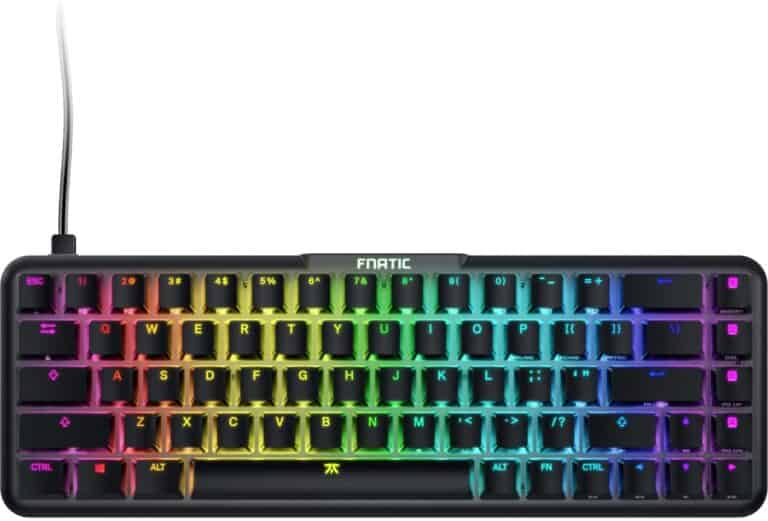
65% keyboards have extra sets of keys compared to 60% keyboards, which makes them functional and compact.
How Many Keys Are There On The 65% Keyboard?
A 65% keyboard has more than 65 keys compared to 104 or 105 keys in a full-sized keyboard.
With the removal of functional and Numpad keys, 65% keyboards usually have 36 fewer keys than the full-sized keyboard.
The standard 65% layout includes the following keys:
- Alphanumeric Keys: All letters, numbers, and punctuation marks.
- Function Row: The top row with keys like F1, F2, etc., is absent.
- Navigation Cluster: Dedicated arrow keys (usually in an inverted T shape).
- Modifiers: Shift, Ctrl, Alt, and Win/Meta keys.
- Additional Keys: Depending on the specific keyboard, there may be extra keys like Home, End, Page Up, Page Down, and Delete.
About thirty percent of the 65% keyboards have 67 keys. Except Leopold FC660M 65 and Velocifire TKL71WS have 66 and 71 keys, respectively.
65% keyboards have arrow keys and one extra row of keys on the right side of the keyboard. The extra row has a page with up and down keys and home and delete keys.
However, the placement of these additional keys varies depending on the manufacturer.
Some of the 65% keyboards have 1.5u keys instead of 1u keys between the spacebar and arrow keys on the left.
Moreover, the missing keys on 65 % of keyboards are mentioned below:
- Fn- keys (F1 to F12)
- Dedicated media keys
- Numpad
- Print screen
Different Keyboard Layouts Of 65% Keyboard
There are two layouts for 65% keyboards: one with all keys clustered together and one with arrow keys separated from the home keys.
Layout 1: Clustered Keys
The keys on the 65 % keyboard with a clustered layout have all the keys close together. There is no separation of arrow keys from home keys.
The clustered layout is good for you if you want your keyboard smaller than the standard 65% keyboards.
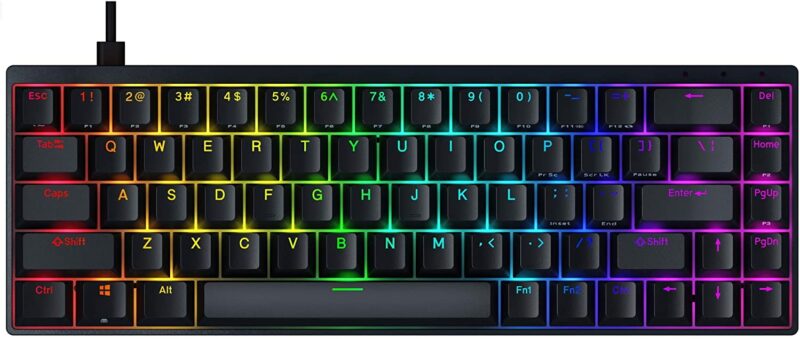
Layout 2: Separate Arrow And Home Keys
The keys on the 65 % keyboard with a well-spaced layout have separated keys. The home keys are in a different cluster than the arrow keys.
This layout is much more comfortable for typing.

How Many Switches Do You Need For A 65% Keyboard?
Switches are placed underneath the keycaps in mechanical keyboards to record each keystroke.
The number of switches can vary depending on the number of keys on the keyboard.
A 65% keyboard typically requires 67-68 switches. However, some support a split spacebar.
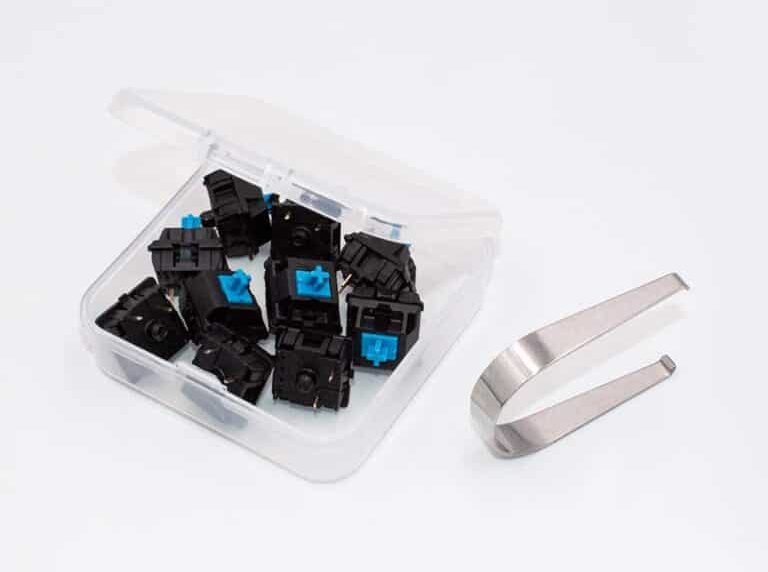
If your keyboard has this feature and you wish to use a split spacebar layout, you’ll need 1-2 more switches for 70.
Even if you don’t require a split spacebar, having a few extra switches on hand is always good.
Thus, getting 70 switches for your 65% keyboard is still the best option, even though you may not use all of them.
Is There a 65% Keyboard with Numpad Available?
65% keyboards usually do not have the Numpad included. However, some brands include the Numpad.
Epomaker SK71 Keyboard does not have function keys or Navigation keys but does have a Numpad.

While, Vortex ViBE Dye Sub PBT mechanical keyboard has 79 keys, including the Numpad.
So, it has 71 keys, excluding the Numpad, which can be considered 65%.
What Number Of Stabilizers Does 65% Keyboard Need?
Stabilizers are used under larger keys, like space bars under keyboards, to stabilize the key during typing.
A 65% keyboard typically needs 4 to 5 stabilizers, but four stabilizers are usually sufficient.
However, a keyboard with a larger right shift key, 1.75u, needs one more stabilizer.
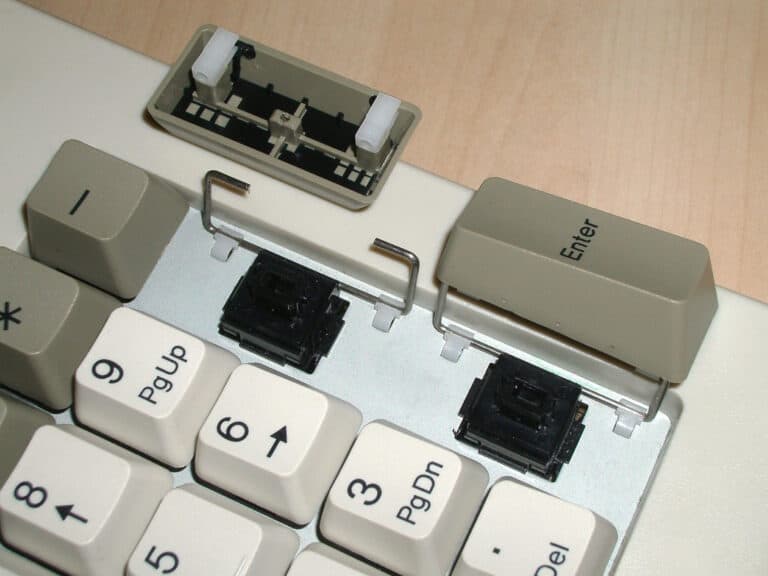
Most 65% of keyboards use only one stabilizer on the spacebar, backspace key, and enter key.
Are 65% Keyboards Worth It?
The trend for keyboard size has shifted from full-sized to compact, essential key keyboards.
Similarly, the market for smaller keyboards is primarily dominated by 60% and 65% keyboards.
Among them, 65% keyboards are slightly larger and have more essential keys than 60%.
Advantages Of 65% Keyboard
65% of keyboards are preferred for their compactness and functionality. Let’s have a look at a few advantages of these keyboards.
1. Ergonomics Of 65% Keyboard
A smaller keyboard means you do not have to extend your hands further to reach the mouse.
The 65% keyboard’s compact layout reduces carpal tunnel and RSI by preventing muscle and tendon strain.
According to research done in three workplaces in Indonesia, 10% of Occupational Health Safety diseases, including carpal tunnel and RSI, are caused by computer keyboard problems.
Studies state that the repetitive switching between mouse and keyboard, especially by gamers who require fast switching action, can cause inflammation of the flexor digitorium and superficial with increased pressure on carpal tunnel space.
65% of keyboards reduce such problems among users and have proven beneficial.
2. Compact Size
The 65% keyboards are only slightly larger than the 60% keyboards, making them incredibly compact to fit in your gaming desk.
It is smaller and easily fits on your small desk. Most can even be carried around in your backpack if it is wireless.
3. Includes Arrow Keys
65% keyboards include arrow keys that are not present in 60% keyboards.
To use arrow functions, you may need to remap keys if they are not already present.
It is quite challenging to toggle between the FN and PN keys to use arrow functions.
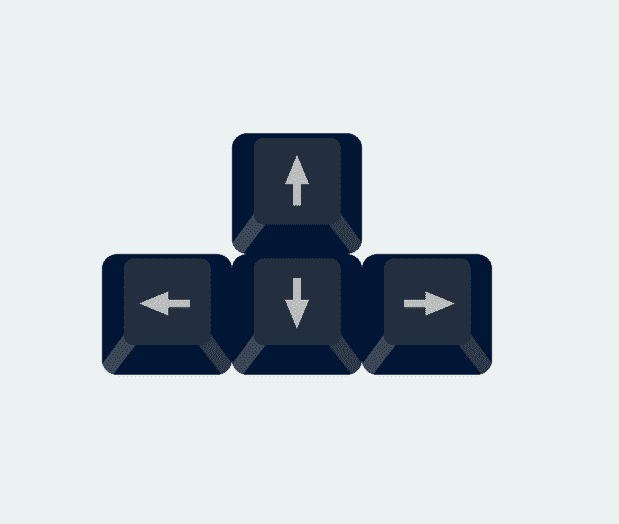
Disadvantages Of 65% Keyboard
65% keyboards are suitable for most users. However, you might have difficulty using this keyboard if you need the Numbad and other missing keys.
1. Lacks Some Essential Keys
As mentioned above, 65% of the keys lack some important keys.
Not having a numpad can make calculating difficult while playing some older games.
Further, other important keys, such as function keys, are shortcuts for functions like saving, help, etc.
Moreover, it won’t be easy to conduct these functions without the function keys.
2. Difficulty in Customization
65% keyboards have different layouts with different keys and USB port placement. So, you may have difficulties fitting different cases on the keyboard.
Your keys will be squashed like the ride-side modifiers or squished while fitting arrow keys.
Also, some keyboards, like the Varmilo VA68, leave an odd gap when fitting custom keys.
Who Benefits from 65% Keyboards the Most?
65% keyboards offer specific usage benefits, making them ideal for certain users.
Here is a list of users who can greatly benefit from using this keyboard:
- Typist: Compact 65% keyboards have a closely spaced key layout, which makes typing easier and more efficient. Such keyboards are mostly mechanical with a different feel, noise, and feedback from the keys, which means different typing experiences.
- Programmer: The numpad is not necessary for most programming languages. Its absence allows programmers to easily reach their mouse, making switching between mouse and keyboard easier.
- Gamer: Gamers do not necessarily need function keys or high click speed keys, which are not found in most mechanical 65% keyboards.
However, 65% keyboards are not suitable for you if your job is related to data entry and you rely a lot on the Numpad.
Best 65% Keyboards in 2024
Here are some of the best 65% keyboards in 2024.
[table “27” not found /]Therefore, its compact and functional design is perfect for you if you do not need a full-sized keyboard and the 60% keyboard lacks essential keys for you.
Likewise, 65% keyboards are equipped with features such as wireless connectivity, customization options, and more.

Leave a Reply